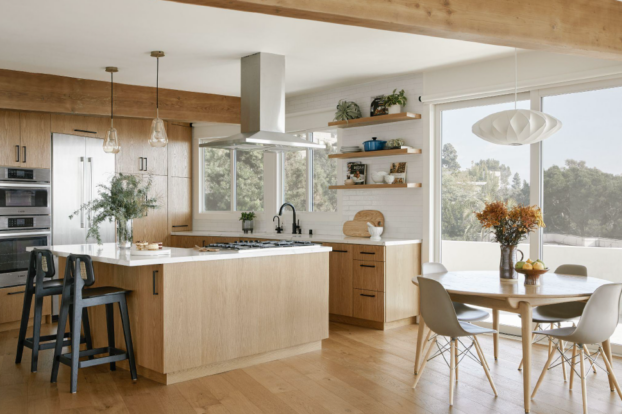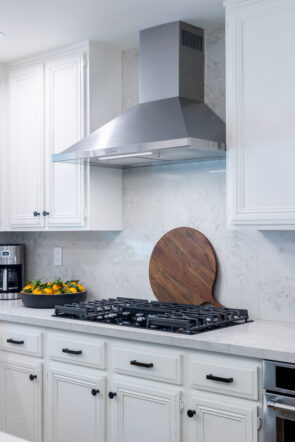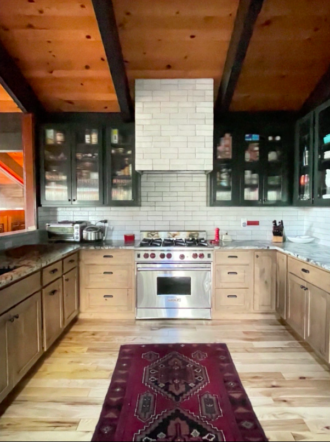AD Pro Global Design Talks Panel
What Defines a Healthy Interior? 4 Top Designers Share Their Thoughts
During a recent AD PRO Global Design Talks Panel presented by Zephyr, designers share the concerns that health-focused interior design needs to address.
By: Stefanie Waldek

When you think about the idea of a healthy home, you might quickly jump to the concept of mental health-focused wellbeing— the idea of creating a restful sanctuary at home where you feel relaxed. And that can be accomplished via any number of means, from adding greenery to creating organization methods to painting the walls a soothing or cheerful color.

But a healthy interior has to go far beyond just emotional wellness, as there’s physical health to consider, too. At a recent AD PRO Global Design Talk Panel titled “Breathing Room: Interiors for Better Living,” hosted by Zephyr, AD PRO editor Lila Allen brought together designers Mandy Cheng, Noz Nozawa, and Shalena Smith to discuss the concept of healthy interiors, addressing everything from mood-enhancing design choices to ones that promote physical wellness.
“A healthy interior is defined for me as what can I do within the four walls that I can control and influence that allows me to be safe from everything outside of my walls that I cannot control, whether that’s sound pollution, air quality issues, or the stress of being out on the street,” said Nozawa during the talk.

Here are the three main categories to consider when designing for health and wellness:
1. Air Quality
During the pandemic, many homeowners turned their attention to the air quality inside their home, perhaps for the first time ever. But viruses are only one pollutant to consider. Other contaminants that could be potentially harmful to one’s health include fuel-burning combustion appliances, dust, mold from excess moisture, and external elements like smog or wildfire smoke. The key to eliminating these is good ventilation that expels toxins.

One method is to install HEPA filters or air scrubbers on an HVAC system to improve indoor air quality. But there’s another tool that your clients might already have installed in your home — a vent hood in the kitchen. But the key is, that vent hood needs to be powerful in order to be effective.
During the pandemic, Smith remodeled her entire kitchen. “I have to say, the very first thing that had to go was my vent hood,” she said during the panel discussion. Not only was the appliance old, but it wasn’t functioning properly, and it made a lot of noise. “My beautiful window treatments had grease on it over the years, but I honestly did not realize how unhealthy it was,” said Smith.
So she installed a brand-new (and very quiet) Zephyr Siena Pro vent hood to excellent effect. “What a difference it’s made. I mean, I turn it on just to recycle the air when I’m not cooking,” she said. “But I think what I’ve been able to offer to my clients is educating them that when you’re cooking and you don’t have a powerful hood vent, it creates pollutants and toxins that just sit there.”
2. Porous Surfaces
Porous surfaces can easily trap bacteria, allergens, and pollutants, contributing to an unhealthy space. In the kitchen, clients might be surprised by materials that are considered porous — they include natural stone like granite and marble, as well as tile with grout. “Make sure that the materials that you choose, if possible, are low-maintenance and easy to be cleaned. For kitchen countertops, I really like quartz because that’s easy to wipe off,” said Cheng.

Elsewhere in your home, textiles, including carpet, are porous surfaces that can accumulate toxins. “When you are filling a place with carpet, over time, that creates bacterias and dust — things that create allergens and pollutants in the air. So we’re trying to kind of get away from that,” said Nozawa.
That’s not to say you need to design sterile boxes, but just as Smith educates her clients about the benefits of a solid vent hood, you should stress the importance of cleaning textiles to lessen pollutants in the home.
3. Sound Pollution
It’s not just the air or porous surfaces that we need to consider in terms of pollution — sound pollution can have a negative effect on a homeowner’s wellbeing, particularly in apartment buildings. In an ideal world, installing soundproofing inside walls is the best solution, but it’s not always a realistic one.
“To mitigate the mental and emotional toll that neighbors that you didn’t ask for are taking on you, you can use white noise machines,” said Nozawa during the Pro Global Design Talk Panel. “Or you can add tons of soft surfaces that might help absorb the vibration and some of that sound transfer through walls.”
Of course, soft surfaces can contribute to other forms of pollution, so again, it’s advisable to educate your clients about cleaning them regularly.